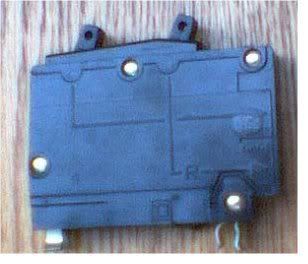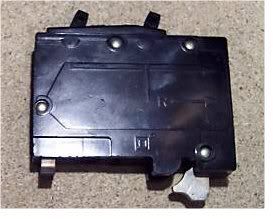electricguy
Senior Member
- Location
- British Columbia Canada
Last July I had a call to a rental ,property for tripping breakers. The property had an electrical service upgrade a few years ago.
The breakers in question were old style 15 amp tandem breakers with the push stabbed in connection for for the circuit.
there is a fridge on one breaker and a cloths washer, deep freeze and recently a portable 1500 W heater.
The buss has arc'd under the load. And now the breaker will not seat on the buss with a good electrical/mechanical connection. this is a 6 circuit panel with 4 tandems and 2 single pole breakers in it. so there is 10 loaded circuits now. I have suggested a sub panel with enough circuits to only install SP breakers.
I have tried to explain this via email to the customer but she wants further information.
this is what i put on the quote to her
SUBPANEL IS OVERLOAD WITH TOO MANY CIRCUITS FOR THE 6 /11
PANEL, THIS HAS CAUSED OVERHEATING OF A SECTION OF BUSS AND
NOW HAS DISTORTED THE ELECTRICAL BUSS IN PANEL.
It needs a bigger sized panel and the double breakers replaced with
single breakers. Please not this is not the panel we used to install note this isnt the panel we used to install
the washer and dryer circuits last summer.
Her reply is
Can you provide some more description for what exactly is being done? Did something break since your original analysis of the electrical a few months ago? How would this work prevent issues going forward?
Any ideas on how to word a response would be appreciated.
The breakers in question were old style 15 amp tandem breakers with the push stabbed in connection for for the circuit.
there is a fridge on one breaker and a cloths washer, deep freeze and recently a portable 1500 W heater.
The buss has arc'd under the load. And now the breaker will not seat on the buss with a good electrical/mechanical connection. this is a 6 circuit panel with 4 tandems and 2 single pole breakers in it. so there is 10 loaded circuits now. I have suggested a sub panel with enough circuits to only install SP breakers.
I have tried to explain this via email to the customer but she wants further information.
this is what i put on the quote to her
SUBPANEL IS OVERLOAD WITH TOO MANY CIRCUITS FOR THE 6 /11
PANEL, THIS HAS CAUSED OVERHEATING OF A SECTION OF BUSS AND
NOW HAS DISTORTED THE ELECTRICAL BUSS IN PANEL.
It needs a bigger sized panel and the double breakers replaced with
single breakers. Please not this is not the panel we used to install note this isnt the panel we used to install
the washer and dryer circuits last summer.
Her reply is
Can you provide some more description for what exactly is being done? Did something break since your original analysis of the electrical a few months ago? How would this work prevent issues going forward?
Any ideas on how to word a response would be appreciated.



